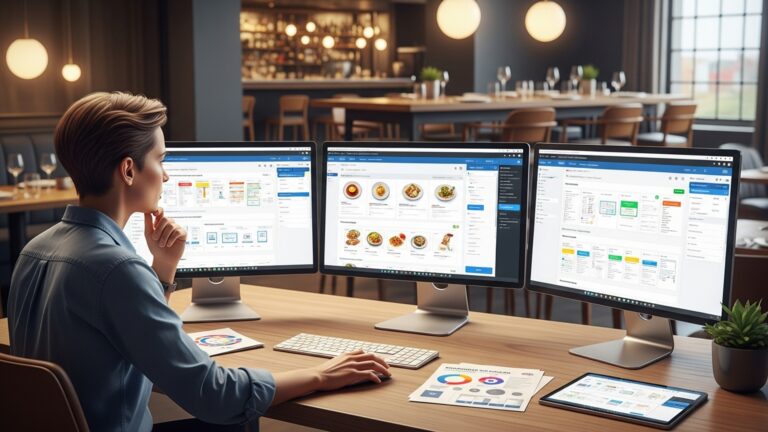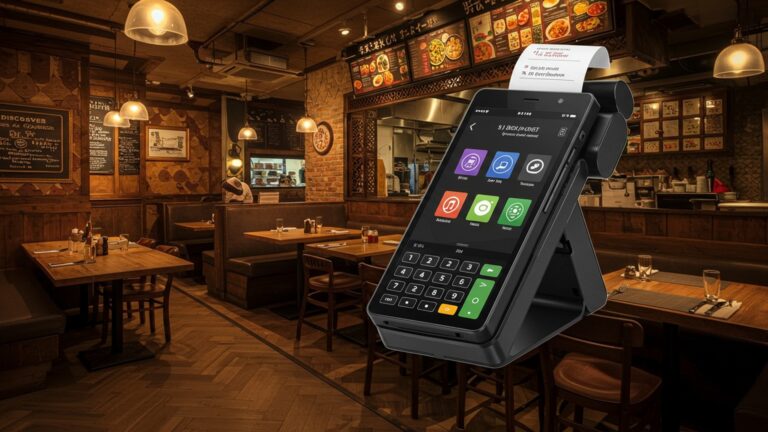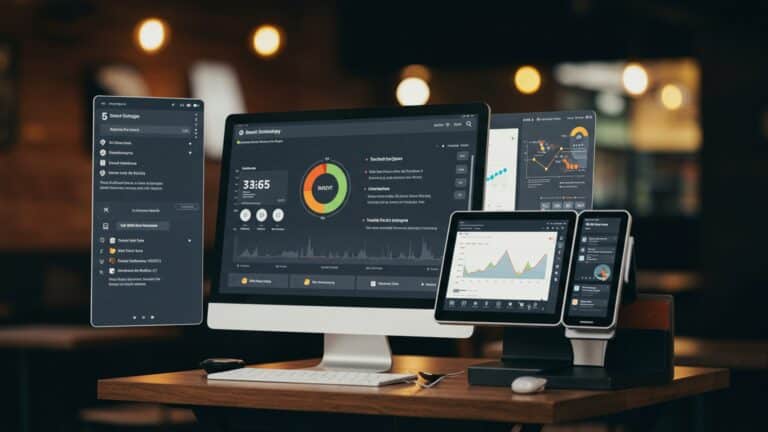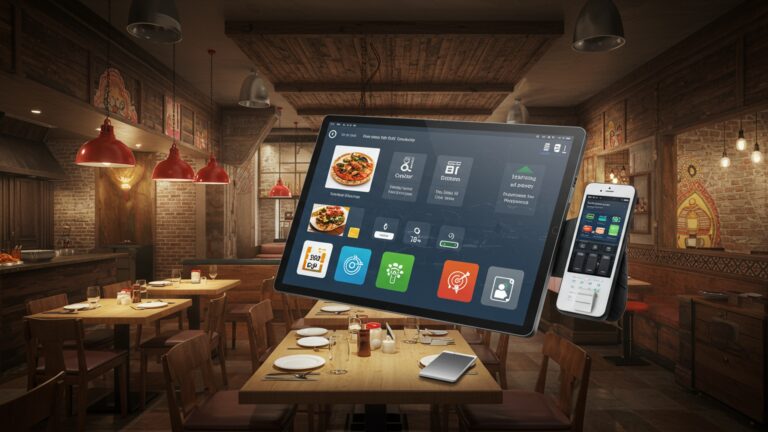How to Choose the Best 7 POS Systems for Your Small Indian Restaurant
The bustling landscape of India’s culinary scene demands more than just great food; efficient operations are paramount, particularly for small Indian restaurants navigating the digital age. A robust restaurant POS system for small restaurants India is no longer a luxury but a necessity, especially with the explosion of UPI payments and integrated delivery platforms like Swiggy and Zomato. Modern POS solutions now offer beyond simple billing, providing crucial features such as real-time inventory management for traditional ingredients, customer relationship management to build loyalty. seamless multi-channel order processing. Selecting the optimal system empowers these establishments to streamline front-of-house and back-of-house operations, enhance guest experiences. boost profitability amidst fierce competition.
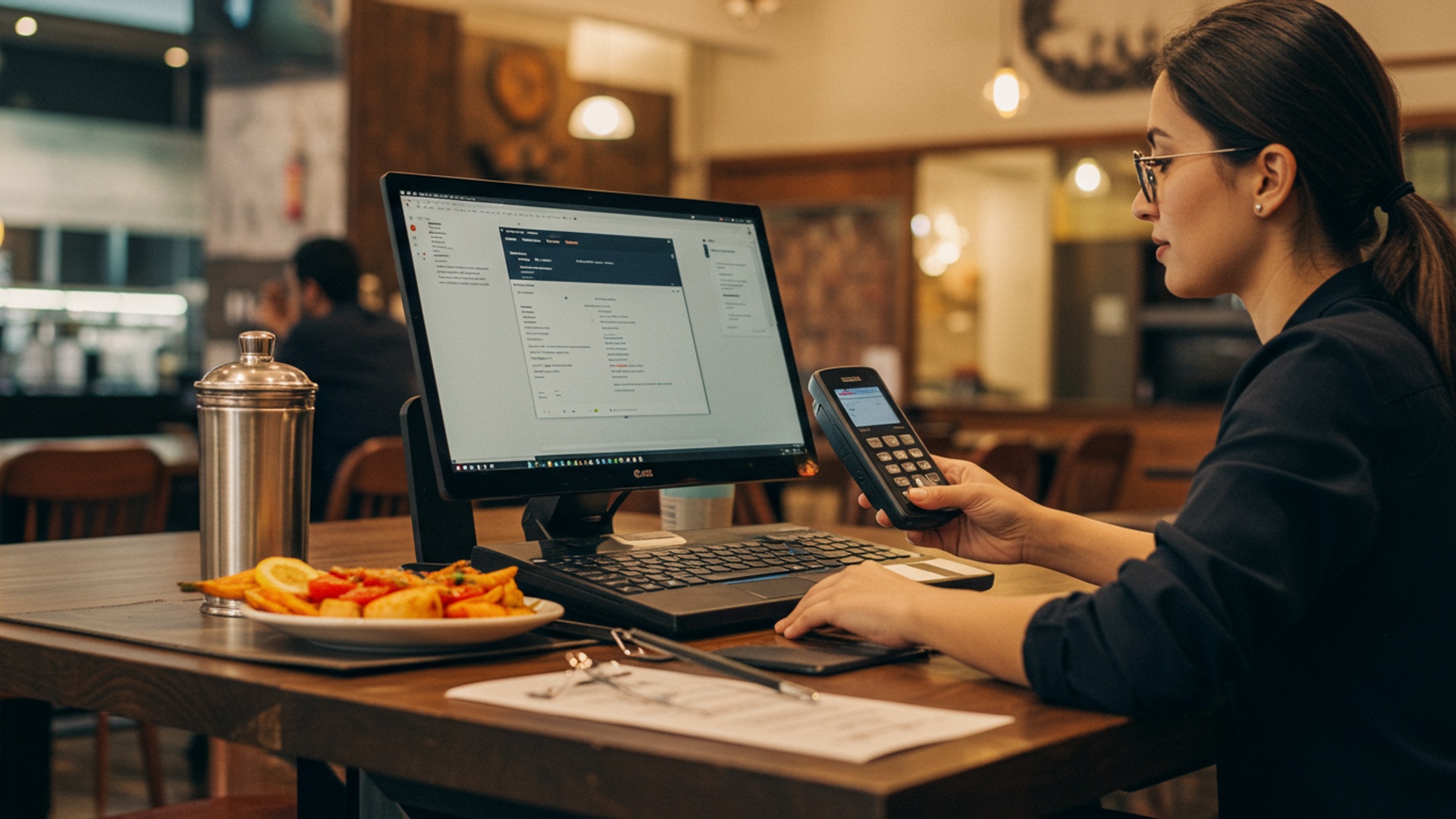
Understanding the Essence of a Restaurant POS System
For any small Indian restaurant striving for efficiency, growth. customer satisfaction in today’s competitive culinary landscape, a robust Point of Sale (POS) system is no longer a luxury but a fundamental necessity. At its core, a POS system is the central hub where all transactions occur. But, for a modern eatery, it’s far more than just a cash register. It’s an integrated software and hardware solution designed to streamline every aspect of your restaurant’s operations, from taking orders to managing inventory and analyzing sales data. Think of it as the brain of your business, processing details and empowering better decision-making.
Why is this particularly crucial for a small Indian restaurant? India’s food service industry is vibrant and diverse. it’s also characterized by unique challenges: high transaction volumes, diverse payment methods (including UPI, cash. cards), the need for quick service. the ever-present demand for precise inventory management of numerous ingredients. A specialized Restaurant POS system for small restaurants India helps navigate these complexities, turning chaos into controlled, profitable operations.
Let’s define some key terms:
- POS (Point of Sale): The place where a customer makes a payment in exchange for goods or services. In a restaurant, this typically refers to the terminal where orders are punched in, bills are generated. payments are processed.
- Inventory Management: A feature within the POS system that tracks the stock of ingredients and finished products. For an Indian restaurant, this is vital for managing items like spices, vegetables, meats. even portion control for dishes like biryani or curries.
- CRM (Customer Relationship Management): A component that helps manage and examine customer interactions and data throughout the customer lifecycle. This includes loyalty programs, feedback collection. personalized marketing efforts.
- KDS (Kitchen Display System): A digital screen in the kitchen that displays incoming orders from the POS terminal, replacing traditional paper tickets. It improves communication, reduces errors. speeds up kitchen operations.
Core Features Every Small Indian Restaurant Needs in a POS
When evaluating a Restaurant POS system for small restaurants India, it’s essential to look beyond basic billing. The right system should offer a suite of features tailored to the fast-paced, ingredient-intensive nature of Indian cuisine. Here are the non-negotiable functionalities:
- Order Management: This includes intuitive interfaces for taking dine-in, takeaway. delivery orders. Features like table management (splitting/merging tables), order modifications. KOT (Kitchen Order Ticket) generation are paramount. Imagine a busy lunch rush; staff can quickly punch in orders, send them to the kitchen via KDS. manage multiple tables without getting overwhelmed.
- Billing & Invoicing: Beyond generating bills, the system must handle split bills, discounts, promotions. most importantly, be fully compliant with Indian GST regulations. Accurate GST calculation and reporting are critical for smooth financial operations.
- Inventory Management: This is where many small Indian restaurants often struggle. A good POS tracks raw materials (e. g. , rice, lentils, spices, vegetables) used per dish, monitors stock levels, alerts when items are low. helps identify waste. For instance, if you run a popular chaat stall, tracking the consumption of various chutneys, potatoes. puris becomes effortless.
- Reporting & Analytics: Data is power. The POS should provide comprehensive reports on daily, weekly. monthly sales, popular dishes, peak hours, staff performance. profitability. These insights can help you optimize your menu, staff scheduling. marketing efforts. Which biryani sells most on weekends? What’s your most profitable snack? These reports answer such questions.
- Customer Relationship Management (CRM): Build loyalty with integrated CRM features. This could include capturing customer contact details, offering loyalty points, managing feedback. running targeted promotions (e. g. , a special discount for a customer’s birthday).
- Integration Capabilities: A modern POS should seamlessly integrate with other essential platforms. This includes online food aggregators (Swiggy, Zomato), payment gateways (UPI, credit/debit cards), accounting software. even third-party delivery services. This ensures a unified operational flow.
- Kitchen Display System (KDS): As noted before, a KDS eliminates paper KOTs, reduces order errors. speeds up kitchen communication. Chefs can view orders, mark items as prepared. manage cooking times efficiently, which is especially beneficial for diverse Indian menus with varying preparation times.
The Indian Context: Unique Challenges and Requirements
Operating a small Indian restaurant comes with its own set of peculiarities that a generic POS system might not adequately address. The best Restaurant POS system for small restaurants India will be built with these specific needs in mind:
- Multi-Currency/Multi-Payment Options: India’s digital payment landscape is rapidly evolving. Your POS must support a wide array of payment methods, including cash, credit/debit cards, UPI (Google Pay, PhonePe, Paytm). digital wallets. The system should seamlessly integrate with various payment gateways.
- GST Compliance: This is non-negotiable. The system must accurately calculate and record GST, generate GST-compliant invoices. provide reports that simplify filing. Manual calculations are prone to errors and can lead to compliance issues.
- Regional Menu Variations: Indian cuisine is incredibly diverse. A POS system should allow for easy customization of menus, pricing. modifiers to accommodate regional specialties (e. g. , South Indian thali vs. North Indian thali, different spice levels, customizable accompaniments).
- Language Support: While English is common, some businesses might benefit from a POS interface that supports local languages, especially for staff training or customer-facing displays.
- Internet Connectivity Issues (Offline Mode): Reliable internet can still be a challenge in certain areas. A robust POS system should offer an offline mode, allowing operations to continue uninterrupted even during internet outages, with data syncing automatically once connectivity is restored. This prevents lost sales and frustrated customers.
- Affordability and Scalability for Small Businesses: Small restaurants operate on tighter budgets. The ideal POS should be cost-effective, offering flexible pricing plans. scalable enough to grow with the business without requiring a complete overhaul.
From my experience, I recall a small tiffin service owner in Bengaluru who initially resisted a POS system, thinking it was too expensive and complex. He used manual registers and struggled terribly with tracking daily sales and ingredient consumption. Once he adopted a simple, cloud-based Restaurant POS system for small restaurants India that offered an offline mode, his daily operations transformed. He could accurately track idli batter consumption, manage multiple delivery orders. even offer a small loyalty program, leading to a noticeable increase in repeat customers and reduced food waste.
Key Considerations When Selecting a Restaurant POS System for Small Restaurants India
Choosing the right POS is a significant investment that can impact your restaurant’s efficiency and profitability for years to come. Here’s what you need to scrutinize:
- Cost: Look beyond the initial price. Consider one-time setup fees, monthly/annual subscription costs, hardware costs (terminals, printers, KDS screens). ongoing support fees. Some providers offer different tiers based on features, so choose what fits your budget and needs.
- Ease of Use: The system should be intuitive for your staff, regardless of their tech proficiency. A complex system will lead to errors, slow down service. require extensive training. Request a demo and observe how easily your staff picks it up.
- Scalability: Will the POS system grow with your restaurant? If you plan to open more branches, add delivery services, or expand your menu, the system should be able to accommodate these changes without requiring a complete migration.
- Customer Support: This is critical. What kind of support does the provider offer? Is it 24/7? Is there local support available in India? What are their response times? Issues with a POS system can halt operations, so reliable and quick support is paramount.
- Hardware Compatibility: Can the software run on your existing hardware, or will you need to invest in new equipment? Some cloud-based systems are hardware-agnostic, running on tablets or smartphones, which can save costs.
- Cloud-based vs. On-premise:
- Cloud-based POS: Data is stored on remote servers and accessed via the internet.
- Pros: Lower upfront costs, accessible from anywhere, automatic updates, offline mode often available.
- Cons: Relies on internet connectivity (though many have offline capabilities).
- On-premise POS: Software and data are stored on your local servers.
- Pros: Full control over data, no internet dependency (for core functions).
- Cons: Higher upfront costs, requires IT maintenance, less flexible for remote access.
For most small Indian restaurants, a cloud-based Restaurant POS system for small restaurants India with robust offline capabilities is generally recommended due to its affordability, flexibility. ease of maintenance.
- Cloud-based POS: Data is stored on remote servers and accessed via the internet.
Deep Dive into 7 Recommended Restaurant POS Systems for Small Restaurants India
Based on their features, market presence. suitability for the Indian restaurant landscape, here are seven highly recommended POS systems:
- Petpooja: One of India’s most popular cloud-based POS solutions. It offers comprehensive features tailored for Indian restaurants, including strong integrations with food aggregators, robust inventory management. multi-outlet management.
- POSist: A well-established player, POSist provides a highly scalable and feature-rich solution. It’s known for its advanced analytics, robust CRM. extensive integration capabilities, suitable for growing small restaurants and even chains.
- LimeTray: Beyond POS, LimeTray offers a full suite of restaurant tech solutions, including online ordering platforms, loyalty programs. marketing tools. Their POS is user-friendly and integrates seamlessly with their other offerings, providing an all-in-one solution.
- GoFrugal: An older, more established player in the Indian market, GoFrugal offers robust and reliable POS solutions. They have extensive experience and cater to various restaurant formats, emphasizing strong inventory control and accounting integrations.
- RanceLab: With a focus on enterprise resource planning (ERP) for retail and hospitality, RanceLab’s FusionResto POS is powerful for inventory-heavy operations. It’s known for its detailed ingredient tracking and waste management features, crucial for Indian kitchens.
- Torqus: Torqus offers a comprehensive restaurant management platform that includes POS, KDS, inventory. online ordering. They are particularly strong in providing solutions for multi-outlet operations and have good analytical tools.
- Vyapar: While primarily a billing and accounting software, Vyapar offers a simplified POS functionality that is highly budget-friendly and easy to use, making it an excellent choice for very small restaurants, cafes, or food trucks looking for basic billing and inventory.
| Feature / System | Petpooja | POSist | LimeTray | GoFrugal | RanceLab | Torqus | Vyapar |
|---|---|---|---|---|---|---|---|
| Target User (Small Restaurants) | Excellent | Excellent | Very Good | Excellent | Good | Very Good | Excellent (Micro/Budget) |
| Cloud-based | Yes | Yes | Yes | Yes (Hybrid options) | Yes (Hybrid options) | Yes | Yes (Desktop/Mobile) |
| Offline Mode | Yes | Yes | Yes | Yes | Yes | Yes | Yes |
| Inventory Management | Strong | Strong | Strong | Very Strong | Very Strong (ERP focused) | Strong | Basic to Moderate |
| KDS Integration | Yes | Yes | Yes | Yes | Yes | Yes | No (Primarily Billing) |
| Online Aggregator Integration | Extensive | Extensive | Extensive | Good | Good | Extensive | Limited |
| CRM & Loyalty | Good | Very Strong | Strong | Good | Good | Strong | Basic |
| GST Compliance | Yes | Yes | Yes | Yes | Yes | Yes | Yes |
| Customer Support (India) | Very Good | Very Good | Good | Very Good | Good | Very Good | Good (App-based) |
| Typical Pricing Model | Subscription | Subscription | Subscription | Subscription/One-time | Subscription/One-time | Subscription | Subscription (Low Cost) |
Actionable Steps: Making Your Final Decision
Choosing the best Restaurant POS system for small restaurants India is a multi-step process. Don’t rush into a decision; thorough research and evaluation will save you time and money in the long run.
- Request Demos: Contact your top 3-4 choices and schedule live demonstrations. Pay attention to the user interface, ease of order entry. how specific features (like inventory tracking for your key ingredients) are handled.
- Utilize Free Trials: Many POS providers offer free trial periods. Use this opportunity to test the system in a real-world setting, even if it’s just for a few days. Get your staff to use it and gather their feedback.
- Talk to Other Restaurant Owners: Network with other small restaurant owners in India. Ask them about their experiences with different POS systems, their pros and cons. the quality of customer support. Personal recommendations can be invaluable.
- Clarify Pricing and Contracts: grasp the full cost involved – initial setup, monthly/annual fees, hardware costs. any hidden charges. Read the contract carefully regarding cancellation policies, data ownership. support agreements. Ensure there are no unexpected surprises.
- Assess Support Structure: interpret how support is delivered. Is it primarily online, via phone, or do they offer on-site visits for critical issues? For a small Indian restaurant, having accessible local support can make a huge difference during operational hiccups.
- Check Integration Ecosystem: Confirm that the POS system integrates with the other tools you use or plan to use, such as your accounting software, online ordering platforms. payment gateways. A fragmented system creates more work, not less.
For example, when a client of mine, who ran a small South Indian eatery, was selecting a POS, we prioritized a system with strong integration with Swiggy and Zomato, as a significant portion of their business came from online delivery. We also focused on robust inventory management for their diverse dosa and idli batters, which had a short shelf life. After trialing a few systems, they found one that offered seamless aggregator integration and precise, real-time tracking of their perishable goods, directly impacting their profitability and reducing waste.
Conclusion
Choosing the right POS system for your small Indian restaurant is far more than a technical decision; it’s a strategic investment in your future. Don’t just pick the cheapest or the most popular; instead, focus on systems that genuinely interpret the unique rhythm of an Indian kitchen, from intricate KOT management for dosas and curries to seamless integration with online ordering platforms, which is paramount in today’s digital landscape. My personal tip? Always insist on a live demo with your specific menu items during your busiest imagined hour. I’ve witnessed firsthand how a system struggling with a simple thali customization can derail an entire evening. Embrace cloud-based solutions that offer robust inventory tracking for ingredients like fresh paneer or specific regional spices, a current trend that significantly reduces wastage and boosts profitability. This isn’t merely about billing; it’s about optimizing every aspect of your operations, enhancing customer satisfaction. ultimately, ensuring your delicious culinary creations reach more patrons efficiently. Make this choice wisely. your POS will become the silent, powerful engine driving your restaurant’s sustained growth and success.
More Articles
7 Essential Features of Restaurant POS Software India for Seamless Operations
Guide to 10 Best Cloud-based Restaurant POS India Systems for Efficiency
Learn 5 Essential Online Ordering POS India Features for Your Restaurant
Discover 7 Affordable Restaurant POS India Solutions for Small Businesses
How to Select the Best Billing and POS Software for Your Business
FAQs
What exactly is a POS system. why would my small Indian restaurant even need one?
A POS (Point of Sale) system is like the central brain for your restaurant operations. It handles everything from taking orders and processing payments to managing inventory, tracking sales. even helping with staff shifts. For a small Indian restaurant, it helps speed up service, reduces errors in billing, keeps an eye on your ingredients. gives you a clear picture of what’s selling well, making your life much easier and your business more efficient.
What key features should an Indian restaurant specifically look for in a POS system?
Look for robust menu customization to handle complex Indian dishes, thalis. combo meals with ease. It should support ingredient-level inventory tracking for spices and specific items, integrate with kitchen display systems (KDS) for clear order communication to the kitchen. handle multiple payment types common in India, including UPI. Online ordering integration, table management. loyalty programs are also big pluses.
How much does a good POS system typically cost for a small Indian restaurant?
Costs can vary quite a bit. You’ll find options ranging from basic, subscription-based software that might start from a few thousand rupees per month, to more comprehensive systems with hardware that could be a one-time investment of ₹30,000 to ₹1,00,000 or more, plus recurring software fees. It really depends on the features you need and the vendor. Always get a clear breakdown of all costs: hardware, software, installation. ongoing support.
I’m not very tech-savvy. Will a POS system be too complicated for me and my staff to use?
Not at all! Most modern POS systems are designed to be very user-friendly with intuitive touch interfaces. Many providers offer training during setup. good systems should be simple enough for your staff to pick up quickly, especially for basic order-taking and billing. Look for systems that emphasize ease of use and have good local support for any questions.
How can a POS system help manage kitchen orders and keep things organized during busy times?
A good POS system will send orders directly to a Kitchen Display System (KDS) or a printer in the kitchen, eliminating handwritten chits and confusion. It allows chefs to see new orders instantly, track cooking times. mark dishes as ready. This streamlines communication, reduces errors, speeds up service. helps manage multiple orders simultaneously, especially crucial during peak hours for Indian cuisine.
Our restaurant does a lot of home deliveries and online orders. Can a POS system help with that?
Absolutely! Many modern POS systems integrate directly with popular food delivery aggregators (like Zomato, Swiggy) and often provide their own online ordering portal. This means all your orders – dine-in, takeaway. delivery – flow into one central system, simplifying order management, inventory updates. billing. It makes managing your delivery fleet or third-party delivery partners much more efficient.
With so many options, how do I figure out which POS system is truly the ‘best’ for my specific small Indian restaurant?
The ‘best’ system is the one that fits your unique needs. Start by listing your must-have features (e. g. , KDS, inventory, online ordering integration, specific billing needs). Then, set a realistic budget. Get demos from a few top contenders, ask for references from similar Indian restaurants. pay close attention to their customer support quality and local presence in India. Prioritize systems that are scalable and offer good value for money, not just the cheapest or most expensive.


